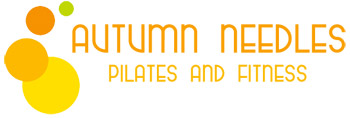I hope we’re all clear that this is not a real thing. If you are truly injury-proof you are either a) stupendously lucky or b) living a very odd and circumscribed life. Maybe you’re an artificial intelligence with no body to speak of?
Unless those things are true, you (and I) have all been injured and are all going to get injured again. This year has thrown a lot at us, including messing up our physical routines. Some of us are doing more activities, or different activities, and some of us are doing less, and those changes can really throw the body a curveball that it’s not ready for. And this year the stakes are higher because none of us want to have to spend time at the doctor’s or PT’s office unnecessarily.
So let’s talk about some things we can do to make it less likely we’ll be injured.
- Train for what you plan to do
The best way to get ready for an activity is to do a smaller version of that activity first. Planning to go for a run? Running requires strong and mobile feet and ankles so do some calf raises, roll out the bottoms of your feet, and rotate your ankles. Running requires enough outer hip strength to hold your full body weight under impact so do some single leg squats and watch your knee tracking. Getting back up on a trapeze or going climbing? That kind of thing requires all the joints to be moving in a fully functional range so take all your joints through their full range. This includes the spine so get some spinal articulation going in all directions. Supporting yourself on a trapeze or climbing wall requires core strength so make sure to do core work and not just sit-ups: work your core in a wide variety of positions like planking and side leg work too. Strengthen the hips, shoulders, and grip because they have to take a lot of load.
Yeah, Autumn, I’m not running or climbing; I’m just doing everyday stuff. Okay, like what? Helping a friend move? Do some squats and lunges where you practice bracing your core in neutral and maybe holding a moderate weight. Do some controlled rotations of the ribcage where you’re also reaching with your arms so you can feel where your safe range is before you pick up that big box of books and twist to put it down in their new living room and blow your back out.
You might have to get creative to figure out what your everyday stuff entails but I bet if you give it some thought you can predict what kinds of movements you’ll be doing and what you might need to do to warm up.
- If you’re doing something that requires repetitive movements, plan how you’re going to incorporate the opposite sort of movement.
Are you raking leaves? Plan breaks when you can stand up tall, open your chest, reach your arms high and wide and spread your fingers. Crouching while you pull up weeds? Can you sit in different ways while you work? And when you come in for the day how about a few swans (or cobras for the yoga folks) to open the front of your hips and extend your spine? Biking the STP? When you take breaks maybe you stand up tall and do some hamstring curls (pulling your heel up to your butt behind you while trying to keep your knee pointing straight down).
- This is all great if you’re planning ahead but how many of us have thrown our backs out reaching down to pick up a pencil? So my third tip is to think ahead and injury proof your situation by thinking through common types of injuries and your own tendencies.
Trip and fall, slip and fall, whatever you want to call them, these are common accidents. We can’t avoid them all but we can make them less likely. Don’t leave things out on the floor and train your family to do the same. Keep pathways in and around your house clear. Do you have a grab bar in your shower? If so, train yourself to always take hold of it when stepping in and out. Did you drop something on the floor? Bending to pick things up is a common way to hurt yourself so when you drop something think through the pathway first before you reach. If you have kids you probably went through a phase where you had to baby-proof your house. Well, adult-proof your life now! You know yourself and your habits: Where can you move that side table you’re always stubbing your toe on? Can you set a timer for breaks if you tend to spend 8 hours weeding the garden when the weather first lightens up? If you get carried away in your Pilates classes and do things you know you shouldn’t, can you plan out exercises in advance that you can swap in when the class starts doing those roll-ups that you know always set your back off?
- Notice when you begin to feel something that might become an injury and take steps to keep it from getting worse.
Many common issues creep up slowly: plantar fasciitis, shoulder impingement, a hip that starts to feel balky. Taking note of small early warning signs and taking action immediately can make a big difference in your outcome. Don’t push through them!
- And finally, have a regular movement practice (like Pilates!) that helps you train and strengthen your body all the way around.
Finally, don’t beat yourself up if you do get injured! Just do what you need to do to recover from it. Not sure what that means? That’s up next on the blog.
copyright 2020 Autumn Needles Pilates and Fitness LLC

[…] Previous […]